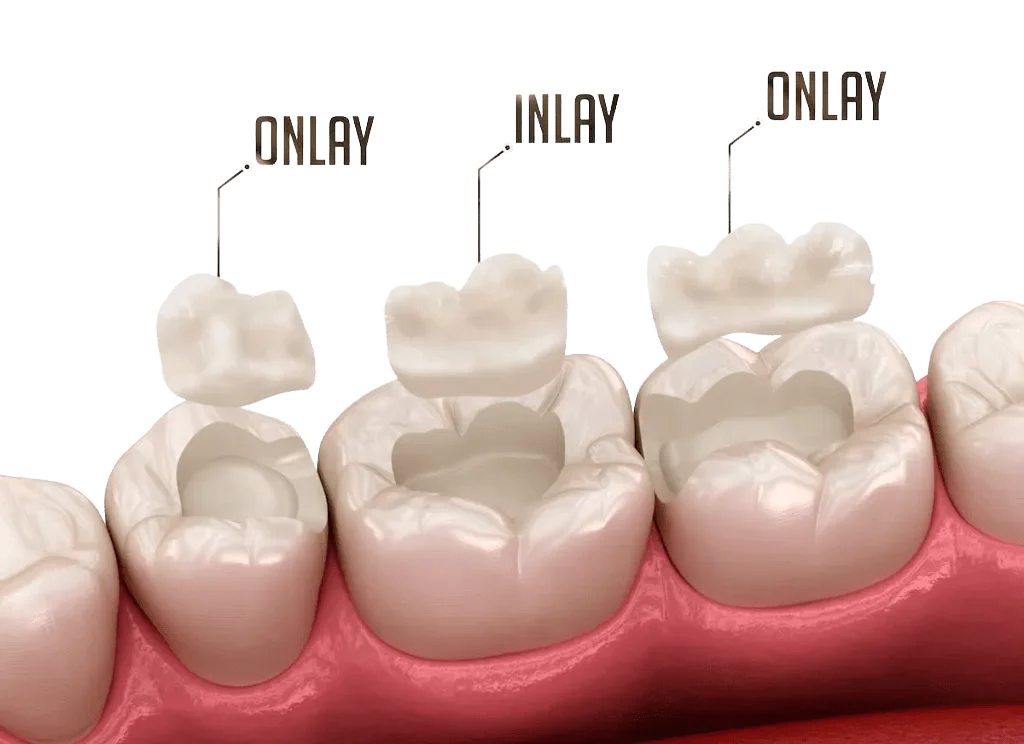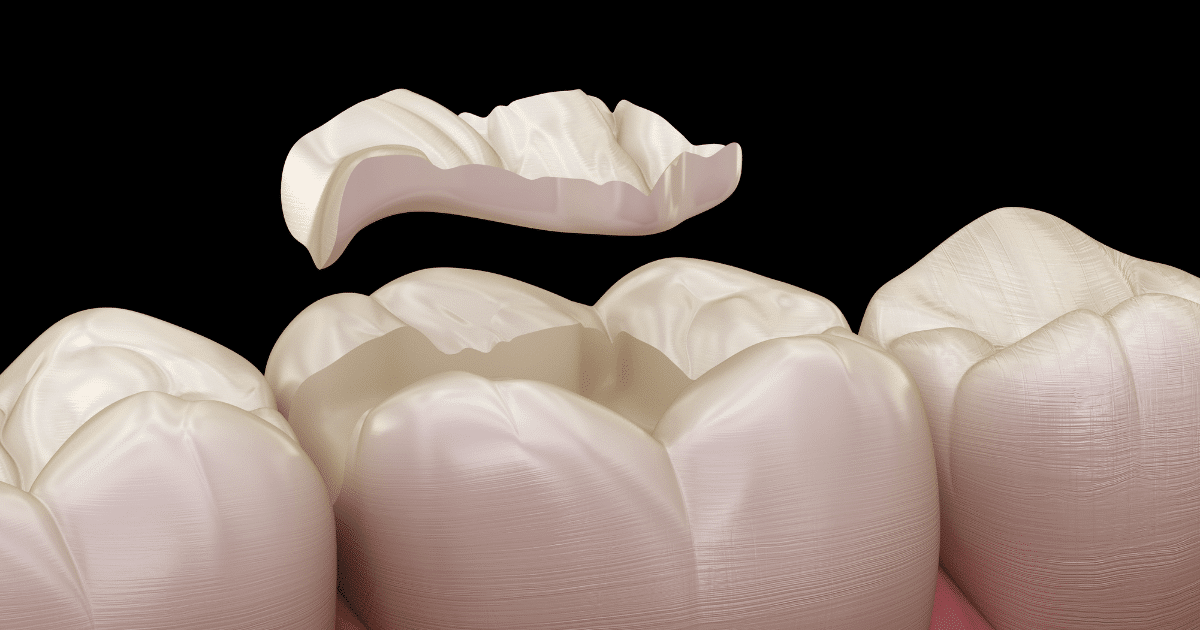In the realm of modern dentistry, technological advancements have provided a variety of options for restoring and enhancing dental health. Among these options are onlays and inlays, innovative procedures that offer significant advantages compared to conventional restorations, such as fillings. At the prestigious Inima Dental clinic in Marbella, we take pride in offering these cutting-edge treatments, providing our patients with a superior solution for their dental needs.
What Are Onlays/Inlays and How Do They Compare to Conventional Fillings?
Conventional fillings, also known as dental fillings, are a common procedure used to treat dental caries. They are used to replace the part of the tooth that has been damaged by decay, with a biocompatible material that seals the cavity and prevents the decay from progressing.
On the other hand, onlays and inlays are indirect dental restorations, specifically designed for each patient in a dental laboratory. Unlike conventional fillings, which are applied directly to the tooth in the dentist’s office, onlays and inlays are custom-made and then cemented in place.
Advantages of Conventional Dental Fillings
- Simple Procedure: Fillings can be done in a single dental appointment and generally do not require anaesthesia.
- Cost: Fillings are the most economical option for restoring a tooth with decay.
- Durability: Composite fillings can last for several years with proper care.
- Aesthetics: Composite fillings can be matched to the natural colour of the tooth for a more natural appearance.
Disadvantages of Conventional Dental Fillings
- Less Resistant Than Other Materials: Composite fillings are less resistant than other materials, such as ceramic, and may wear out or
fracture over time.
- Possible Sensitivity: Fillings can cause tooth sensitivity to cold, heat, or sweet foods.
- Not as Aesthetic as Other Options: Metal fillings are not as aesthetically pleasing as composite fillings or crowns.
- May Require Replacement: Fillings may need to be replaced every 10 to 15 years, depending on the material used and the care given.
When Are Conventional Dental Fillings Recommended?
Conventional dental restorations, also known as fillings, are recommended in the following cases:
- Dental Caries: When dental caries have damaged the enamel of the tooth, it is necessary to remove it and replace it with a
biocompatible material to prevent the decay from progressing.
- Minor Dental Fractures: Composite fillings can be used to repair small fractures in the teeth.
- Worn Teeth: Fillings can be used to restore the shape and function of teeth that have been worn down by bruxism or other reasons.
- Aesthetic Reasons: Composite fillings can be used to improve the appearance of a tooth with a stain or discolouration.
Advantages of Onlays/Inlays at Inima Dental

Onlays and inlays offer several advantages over conventional restorations:
- Greater Strength and Durability: Onlays and inlays are made of more resistant materials than fillings, such as ceramic or composite. This means
they last longer and are less prone to fracturing or wearing out.
- Better Aesthetics: Onlays and inlays can be customised to match the natural colour of the teeth, making them more aesthetically pleasing
than metal or composite fillings.
- Better Sealing: Onlays and inlays are cemented to the tooth, creating a tighter seal than fillings. This helps prevent dental caries and sensitivity.
- Preservation of Dental Structure: Onlays and inlays are more conservative than crowns, as only the parts of the tooth that are damaged are
removed. This helps preserve healthy dental structure.
Disadvantages of Onlays/Inlays
Onlays and inlays also have some disadvantages:
- Cost: Onlays and inlays are more expensive than conventional fillings.
- More Complex Procedure: Placing an onlay or an inlay requires two dental appointments, one for taking the impression of the tooth and another
for cementing the restoration.
When Are Onlays/Inlays Recommended?
Onlays and inlays are recommended in the following cases:
- Extensive Dental Caries: When dental caries is too large for a conventional filling.
- Dental Fractures: When a tooth has fractured or chipped.
- Worn Teeth: When a tooth has been worn down by bruxism or other reasons.
- Aesthetic Reasons: When improving the appearance of a tooth with a metal or composite filling is desired.
How to Choose Between Onlays/Inlays and Conventional Dental Fillings
Choosing between onlays/inlays and dental fillings can be a difficult decision. Both types of restorations have their own advantages and disadvantages, and the best option for you will depend on your individual needs.
Here are some factors to consider when making your decision:
|
Factors |
Fillings |
Onlays/Inlays |
|
Extent of damage |
They are recommended for small to medium dental caries. |
They are recommended for large dental caries, dental fractures, or worn teeth. |
|
Cost |
They are the most economical option. |
They are more expensive than fillings but are more durable. |
|
Aesthetics |
Composite fillings can be the same colour as the tooth, but they are not as aesthetic as onlays/inlays. |
Manufactured in a laboratory and can be customised to match the colour and natural shape of your tooth. |
|
Durability |
They last 5 to 10 years on average. |
They last 15 to 20 years on average. |
|
Procedure |
Procedure can be done in a single dental appointment. |
Require two dental appointments: one for taking the impression of the tooth and another for placing the restoration. |
|
Oral health |
They are a good option for patients with early or moderate dental caries. |
They may be a better option for patients with extensive dental caries, sensitive teeth, or bruxism. |
At Inima Dental, our commitment is to provide our patients with the highest quality of dental care using cutting-edge technologies and techniques. If you are considering enhancing your dental health with traditional dental fillings or with onlays and inlays, do not hesitate to schedule a consultation with our experts at Inima Dental. We are here to help you achieve a healthy and radiant smile that you can enjoy for many years to come.




No Comments